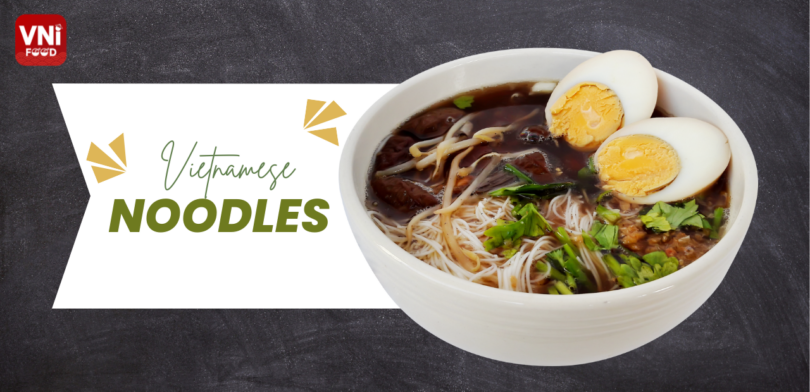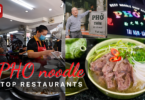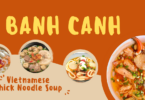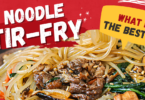Versatile Vietnamese Noodles: A Culinary Cornerstone
Noodles hold a special place in Vietnamese cuisine, serving as the foundation for a myriad of beloved dishes that reflect the country’s rich culinary heritage. Characterized by their versatility, noodles in Vietnam come in various shapes, sizes, and textures, each contributing to the unique flavor profile of the dish they feature in.
Vietnamese noodles are known for their delicate texture and ability to absorb the flavors of the broth or sauce they are cooked in. From the silky strands of rice noodles to the chewy bite of wheat noodles, each type offers a distinct eating experience that caters to different preferences.
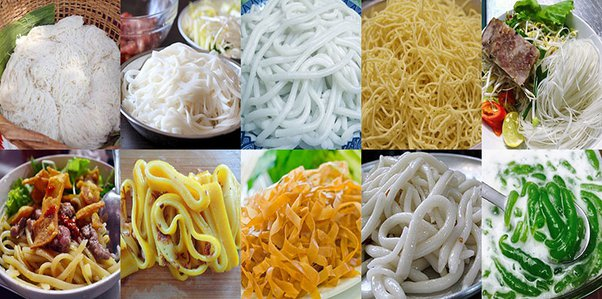
– Ingredients: The primary ingredients used in Vietnamese noodles vary depending on the type and regional influences. Rice flour is a common base for many noodle varieties, resulting in noodles that are gluten-free and have a light, airy texture. Wheat flour is also used to make noodles, especially in dishes like mi (egg noodles) and banh pho (flat rice noodles). Other ingredients such as tapioca starch, mung bean starch, and cassava flour may also be used to create specialty noodles with unique textures.
– Varieties: Vietnamese noodles come in a plethora of forms, ranging from thin vermicelli noodles to wide flat noodles and everything in between. Some popular types include:
- Pho: Thin, flat rice noodles typically served in a fragrant beef or chicken broth.
- Bun: Thin rice vermicelli noodles commonly found in noodle salads and soups like Bun Bo Hue and Bun Cha.
- Mi: Wheat egg noodles used in dishes like Mi Quang and Cao Lau, known for their chewy texture and rich flavor.
- Banh Canh: Stands out for its thick, chewy noodles, distinct from other Vietnamese noodle dishes. Made from rice flour and tapioca starch, these noodles are served in a savory broth with toppings like pork, shrimp, and vegetables.
- Nui: Similar to vermicelli noodles but slightly thicker and have a chewier texture. They are made from rice flour and water.
Whether slurped in a steaming bowl of pho or tossed in a refreshing noodle salad, Vietnamese noodles offer a delightful culinary experience that captures the essence of Vietnamese cuisine.
Dishes Can Be Made With Noodles
Below is a glimpse of Vietnam’s rich tapestry of noodle soups and dishes, each brimming with distinctive flavors and ingredients that encapsulate the country’s diverse culinary heritage.
- Pho: A flavorful noodle soup consisting of fragrant broth and rice noodles, typically paired with beef or chicken, fresh herbs, and spices.
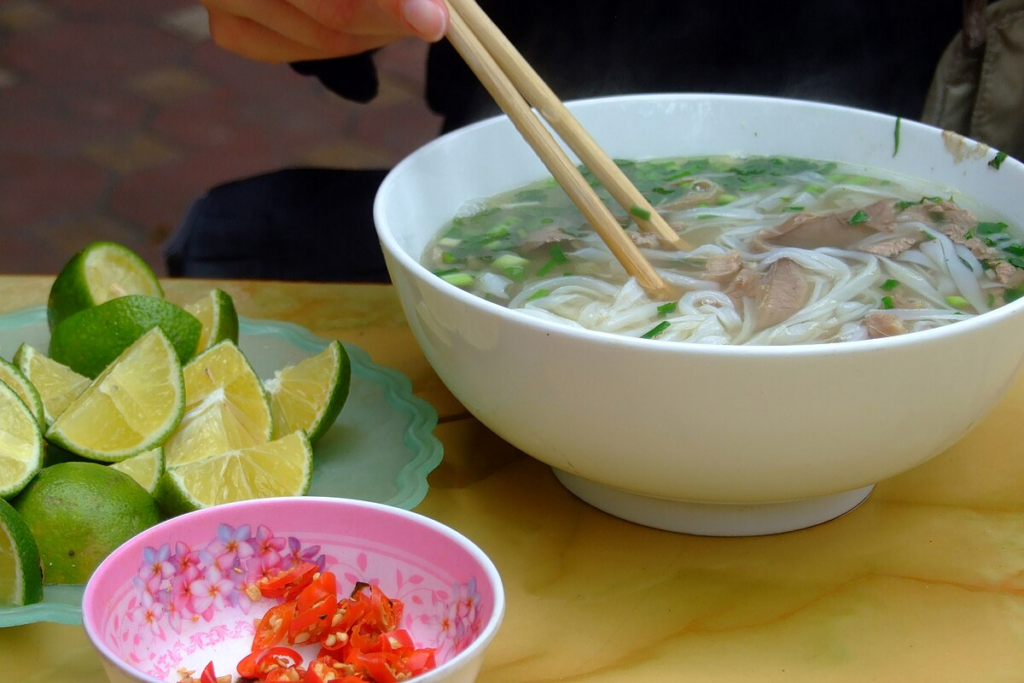
- Bun Bo Hue: A spicy and aromatic noodle soup from Central Vietnam, often containing rice noodles and beef, along with pig’s blood and pork knuckle, flavored with a distinctive blend of lemongrass and chili.
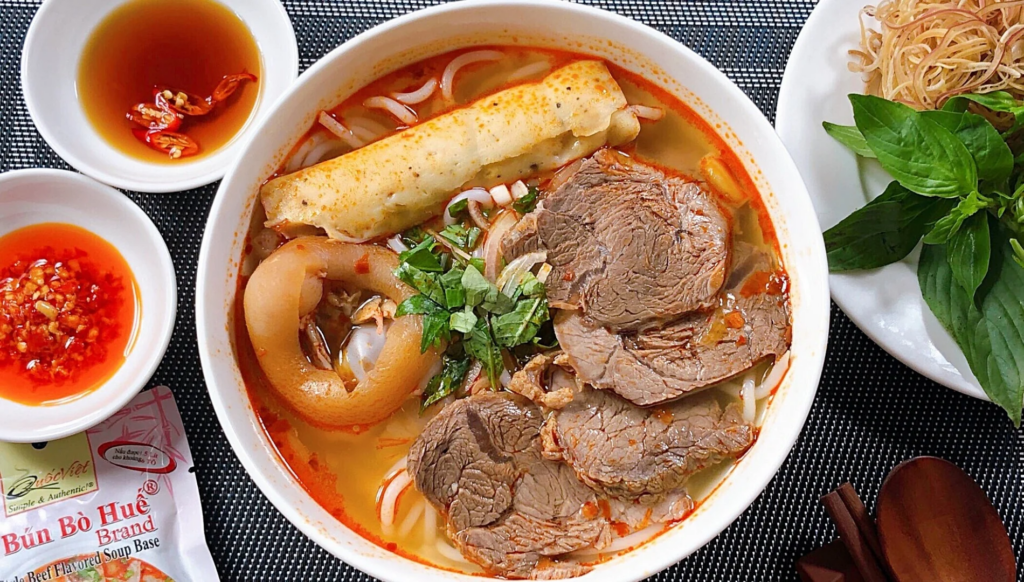
- Mi Quang: A specialty noodle dish from Central Vietnam, usually made with turmeric-infused noodles and topped with pork, shrimp, or chicken, along with fresh herbs and vegetables in a broth.
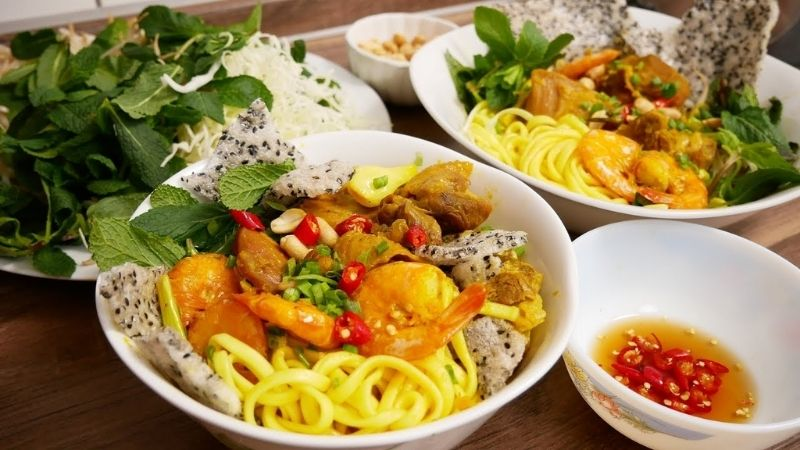
- Bun Rieu: A noodle soup featuring crab paste and various fresh herbs, often enjoyed with a side of crispy fried tofu.
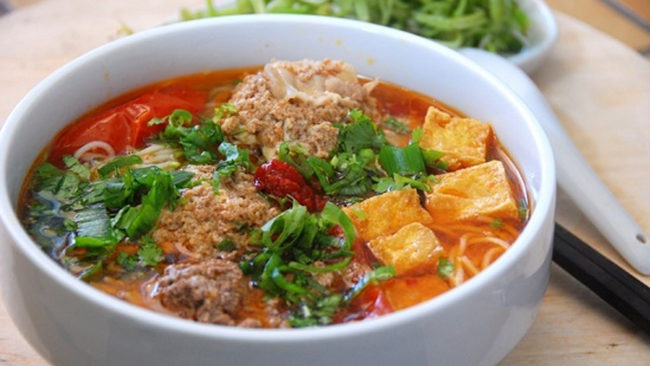
- Cao Lau: A specialty noodle dish from Hoi An, consisting of thick noodles, pork, fried rice crackers, and fresh greens.
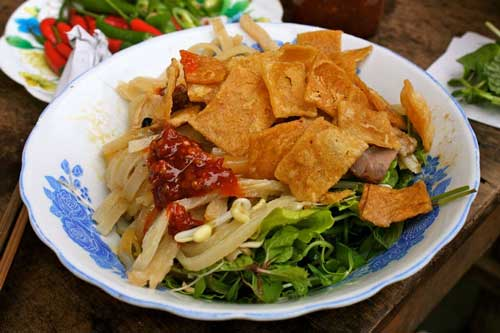
- Banh Canh: A thick noodle soup commonly found in Southern Vietnam, typically made from rice or tapioca flour, served with pork, shrimp, or crab, and fresh herbs.
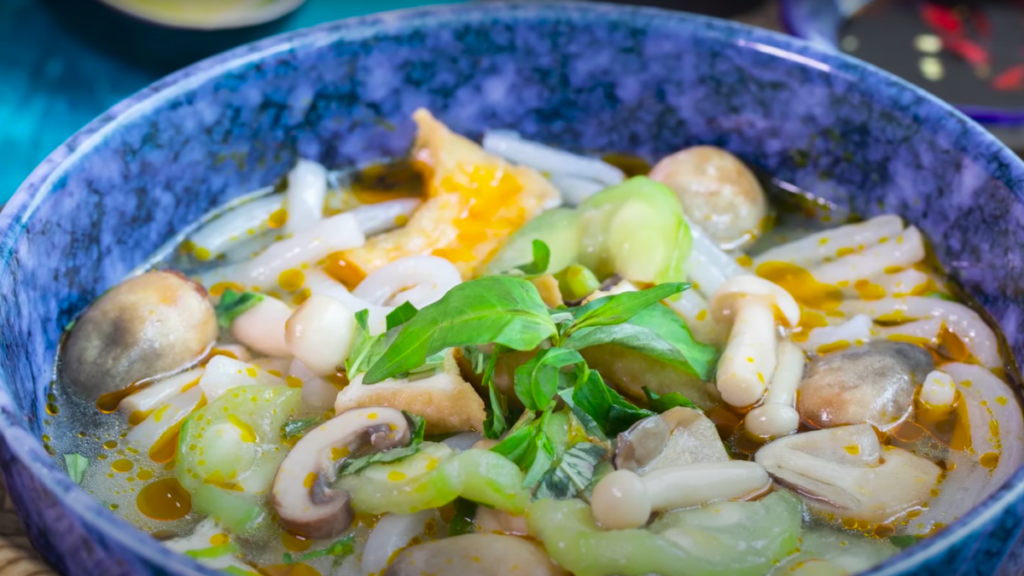
- Bun Cha: A Hanoi specialty consisting of rice vermicelli noodles, grilled pork, and pork patties, often served with a sweet and tangy dipping sauce and fresh herbs.
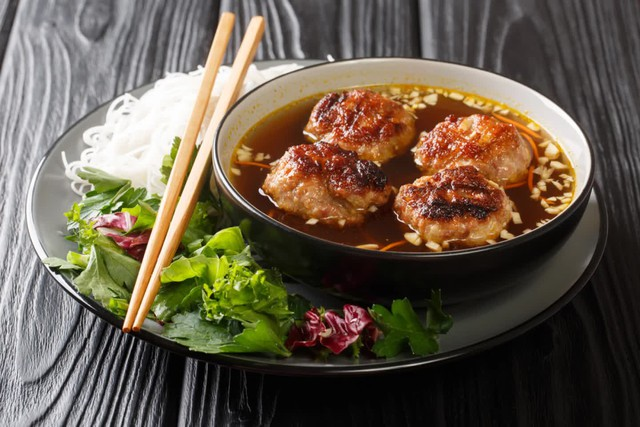
- Mien Ga: A noodle soup made with glass noodles and chicken, typically flavored with a fragrant broth and spices.
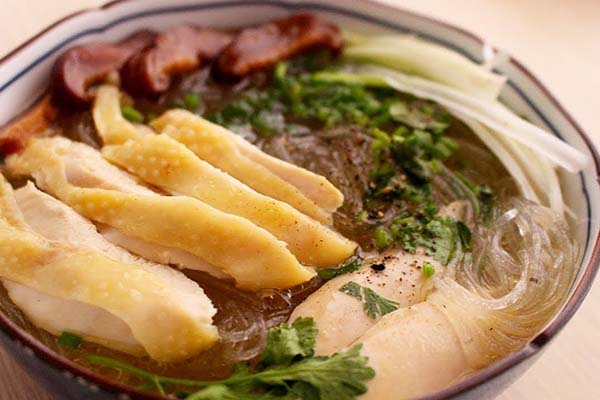
- Bun Thit Nuong: A noodle dish comprising rice vermicelli noodles, grilled pork, fresh herbs, and pickled vegetables, often served with a sweet and tangy dipping sauce.
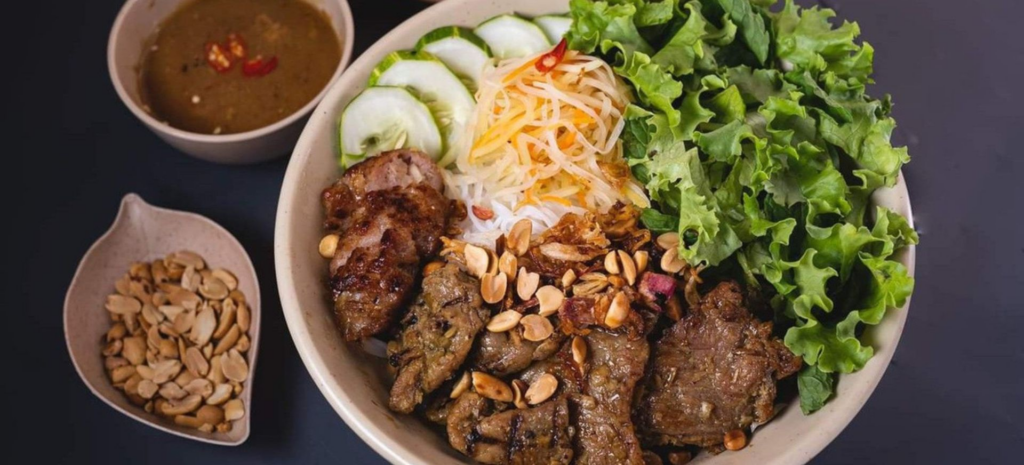
- Hu Tieu: A popular noodle soup from Southern Vietnam, featuring rice noodles and a variety of meats such as pork, shrimp, or chicken, served in a flavorful broth.
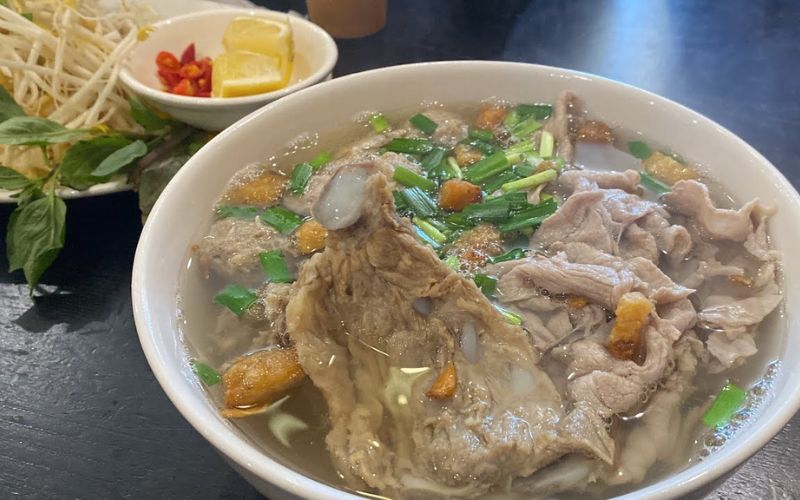
Top 5 Noodle Restaurants in Vietnam
1. Pho 2000
- Location: 46 Le Thanh Ton, Ben Nghe, 1 District, Ho Chi Minh.
- Specialty: Pho, Vietnam’s iconic beef noodle soup.
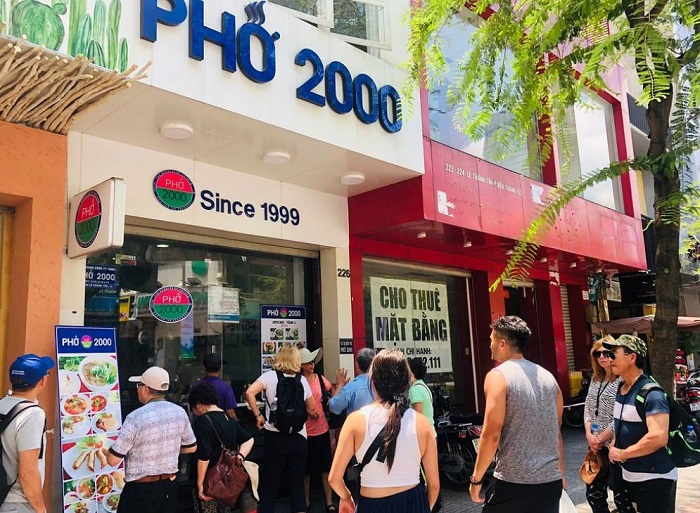
Pho 2000 gained fame after being visited by former US President Bill Clinton. It’s renowned for its flavorful and aromatic pho, characterized by a clear broth, tender slices of beef or chicken, and fragrant herbs like cilantro and basil. The broth is simmered for hours with a blend of spices, creating a depth of flavor that sets it apart. Diners can customize their pho with condiments like chili sauce, hoisin sauce, and lime, making each bowl a personalized culinary experience.
2. Bun Bo Hue O Xuan
- Location: 189 Xa Dan Ward, Nam Dong, Dong Da, Ha Noi
- Specialty: Bun Bo Hue, a spicy beef noodle soup originating from central Vietnam.
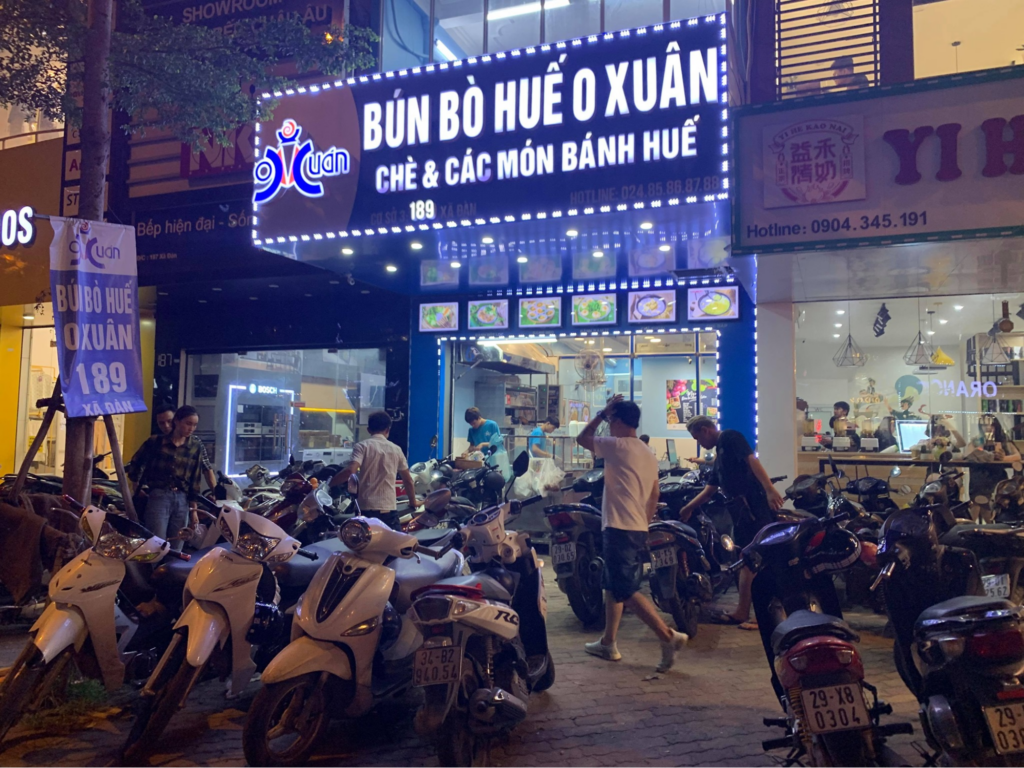
Bun Bo Hue O Xuan is celebrated for its authentic Bun Bo Hue, a spicy and robust beef noodle soup that originates from central Vietnam. The dish features thick rice noodles, tender slices of beef, pork hock, and congealed pig’s blood, all simmered in a rich and fragrant broth infused with lemongrass, shrimp paste, and chili oil. The interplay of bold flavors and textures makes it a favorite among locals and tourists alike, offering a true taste of Hue’s culinary heritage.
3. Mi Quang Mrs.Oanh
- Address: 69 Le Loi Street, An My Ward, Tam Ky City, Quang Nam Province.
- Specialty: Mi Quang (Quang Nam-style noodles) and Central Vietnamese cuisine.
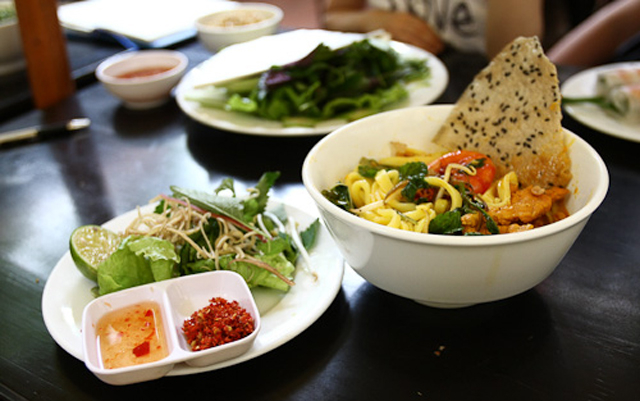
Nestled in Tam Ky City – Quang Nam, Mi Quang Mrs. Oanh stands as a culinary beacon renowned for its exquisite flavors and authentic renditions of Central Vietnamese cuisine. With a dedication to quality and tradition, this restaurant has mastered the art of Mi Quang, a regional specialty beloved for its vibrant colors, rich broth, and harmonious blend of textures.
4. Bun Cha Huong Lien
- Location: 24 Le Van Huu, Phan Chu Trinh, Hai Ba Trung, Ha Noi.
- Specialty: Bun Cha, a dish of grilled pork patties and vermicelli noodles.
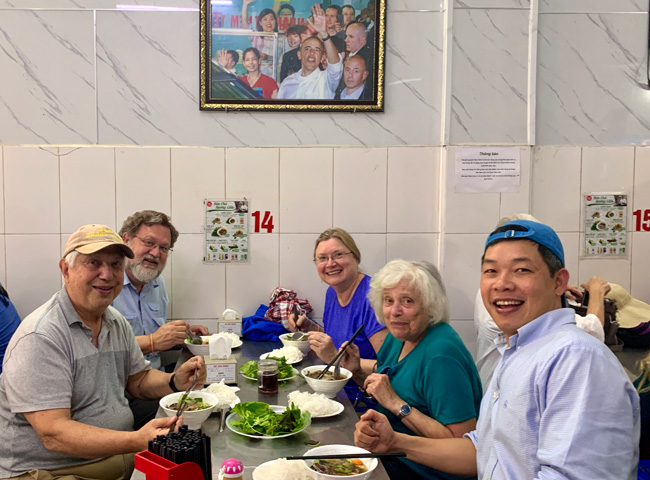
Bun Cha Huong Lien gained international recognition after former US President Barack Obama dined there during his visit to Vietnam. The restaurant specializes in Bun Cha, a traditional Vietnamese dish featuring grilled pork patties served with vermicelli noodles, fresh herbs, and a dipping sauce. The smoky charred flavor of the pork, combined with the sweet and tangy sauce, creates a harmonious balance of flavors that captivates diners’ taste buds. The experience of dining at Bun Cha Huong Lien offers a glimpse into the authentic flavors of Hanoi’s street food culture.
5. Bun Rieu Cua Thanh Huong
- Location: 287/68 Nguyen Dinh Chinh, 11 Ward, Phu Nhuan District, Ho Chi Minh.
- Specialty: Bun Rieu Cua, a Vietnamese crab noodle soup.
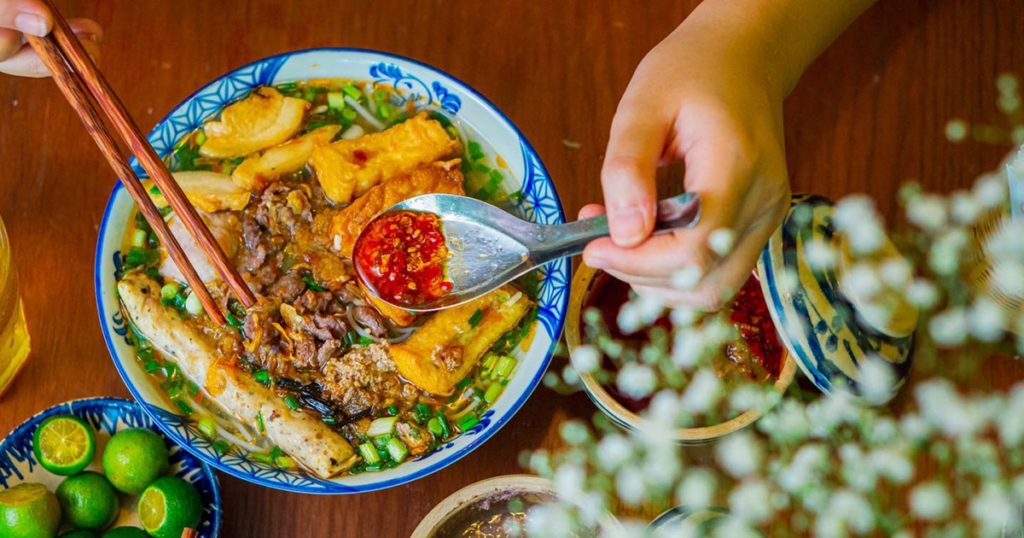
Bun Rieu Cua Thanh Huong is renowned for its flavorful Bun Rieu Cua, a Vietnamese crab noodle soup that’s beloved for its rich and complex flavors. The broth is made from a blend of crab meat, tomatoes, and aromatic spices, resulting in a tangy and savory base that’s both comforting and satisfying. Served with chewy rice noodles and a generous garnish of fresh herbs and vegetables, each bowl of Bun Rieu Cua offers a tantalizing taste of southern Vietnamese cuisine.
Kitchen Tips and Notes for Cooking Vietnamese Noodles
– Boiling Noodles Properly:
- Boil the noodles according to the package instructions or until they are al dente, typically for about 5-7 minutes depending on the type of noodles.
- Once the noodles are cooked, promptly drain them and rinse them under cold water to stop the cooking process and prevent them from becoming mushy.
- Soaking the noodles in cold water not only helps them retain their chewy texture but also prevents them from sticking together, ensuring they are perfectly cooked and separated when served.
– Noodle Selection: Choose the right type of noodle for your dish. Whether it’s pho, bun, or mi, selecting the appropriate noodle variety ensures the dish’s authenticity and texture.
– Flavorful Broth: The broth forms the foundation of many Vietnamese noodle dishes. To make a rich and flavorful broth, use high-quality ingredients such as bones, meats, herbs, and spices. Simmer the broth slowly to extract maximum flavor and depth.
– Balanced Seasoning: Season the broth and other components of the dish carefully to achieve a harmonious balance of flavors. Use ingredients like fish sauce, soy sauce, salt, sugar, and aromatics such as ginger, garlic, and shallots to enhance the taste profile.
– Tasty Toppings: Toppings play a crucial role in enhancing the overall flavor and texture of the dish. Choose a variety of fresh herbs, crunchy vegetables, tender meats, and savory condiments to complement the noodles and broth.
– Fresh Ingredients: Whenever possible, use fresh, high-quality ingredients to maximize the dish’s flavor and nutritional value. Fresh herbs, vegetables, and proteins add vibrancy and depth to Vietnamese noodle dishes.
– Garnishes and Condiments: Garnishes and condiments like lime wedges, chili peppers, bean sprouts, and hoisin sauce provide additional layers of flavor and customization. Encourage diners to add these elements according to their taste preferences.
– Serve Hot: Vietnamese noodle dishes are best enjoyed piping hot. Serve the dish immediately after assembling to preserve the noodles’ texture and ensure the broth remains steaming hot.
Conclusion
In conclusion, Vietnamese noodle restaurants offer a tantalizing journey through the rich and diverse culinary landscape of Vietnam. Each dish tells a story of tradition, innovation, and culinary mastery.
Whether you’re a seasoned traveler seeking new gastronomic adventures or a curious food enthusiast eager to explore the wonders of Vietnamese cuisine, I encourage you to embark on your own culinary odyssey and discover the magic of Vietnamese noodle restaurants for yourself.
Bon appetit!


